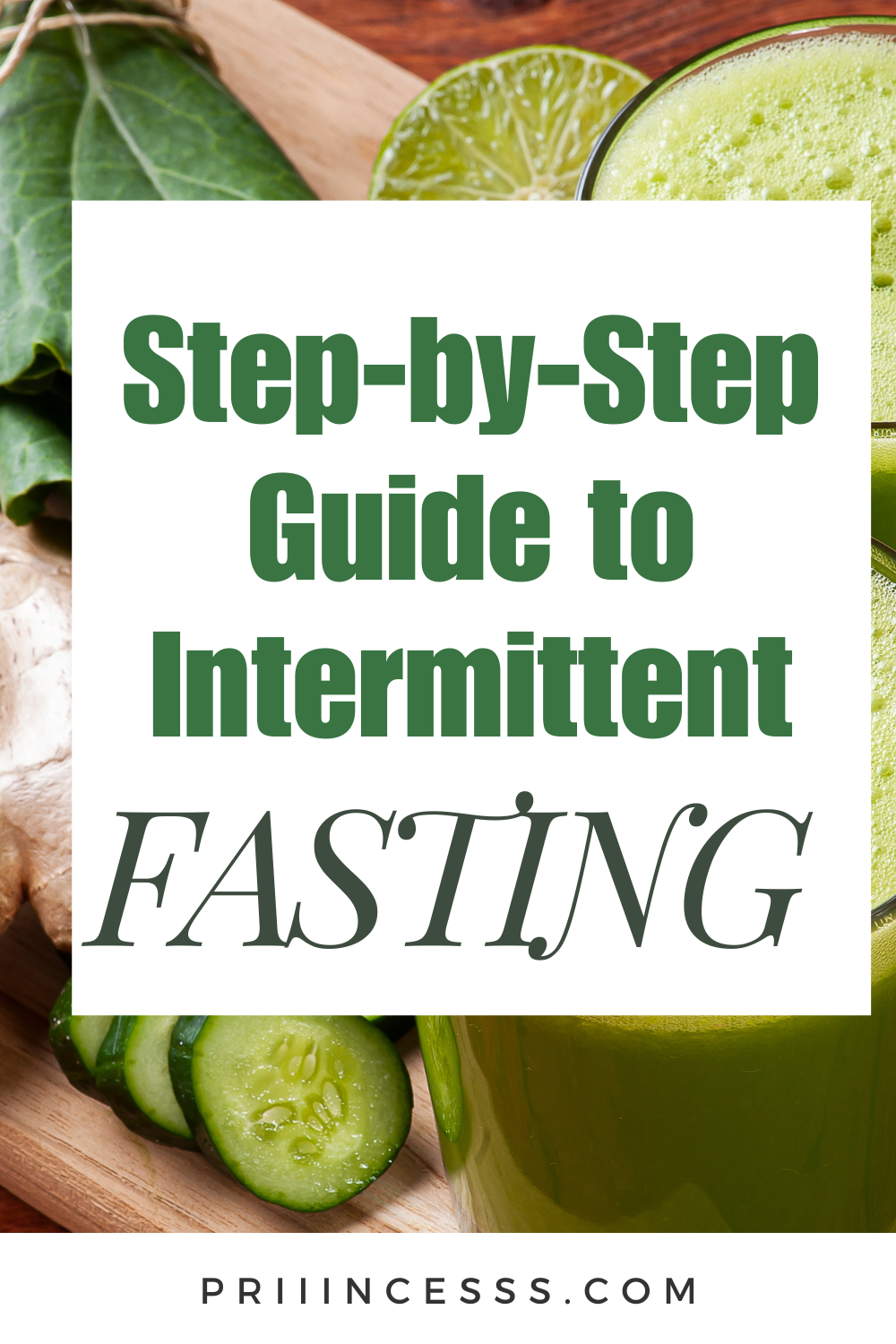Step-by-Step Guide to Intermittent Fasting


I am doing a 60-Day Mommy Glow Challenge and in month one I am Intermittent Fasting for 30 days and I decided to share quick a Step-by-Step Guide to Intermittent Fasting.
Intermittent fasting (IF) involves cycling between periods of eating and fasting.
Here’s a simple step-by-step guide to get you started:
Step 1: Choose Your Intermittent Fasting Plan
There are several intermittent fasting methods you can choose from:
- 16/8 Method: Fast for 16 hours and have an 8-hour eating window.
- 5:2 Diet: Eat normally for 5 days and restrict calorie intake (500-600 calories) for 2 days.
- Eat-Stop-Eat: Fast for 24 hours once or twice a week.
- Alternate-Day Fasting: Alternately fast every other day.
Choose the method that best suits your lifestyle and goals. Personally, I’m doing the 16/8 Method: Fast for 16 hours and have an 8-hour eating window. I don’t eat before noon and I don’t eat after 8pm.
Step 2: Gradually Adjust Your Eating Schedule
If you’re new to intermittent fasting, ease into it:
- Start by delaying breakfast by an hour each day.
- Slowly increase the fasting period until you reach your target fasting window.
Step 3: Focus on Balanced Meals
When you do eat, make sure your meals are balanced and nutritious:
- Proteins: Include lean meats, fish, eggs, beans, or tofu.
- Healthy Fats: Opt for avocados, nuts, seeds, and olive oil.
- Carbohydrates: Favor whole grains, fruits, and vegetables.
- Hydration: Drink plenty of water.
Step 4: Stay Hydrated
During the fasting period, drink plenty of water. You can also consume:
- Black coffee
- Herbal tea
- Fresh cold pressed juices
- Bone broth (if your plan allows it)
These can help curb hunger without breaking your fast.
Step 5: Listen to Your Body
During fasting, it’s important to monitor how your body feels. If you experience:
- Dizziness
- Extreme fatigue
- Irritability
Step 6: Plan Your Meals Ahead
Make meal planning part of your routine to ensure you’re getting the right nutrients during your eating window. This can help avoid impulsive eating and make it easier to stick to your intermittent fasting schedule. Meal planning will also help with avoiding eating fast food and unhealthy sugary snacks.
Step 7: Stay Consistent
Consistency is key for intermittent fasting. Stick to your chosen plan, but be flexible and adjust if needed.
Step 8: Combine with Exercise
For better results, combine intermittent fasting with regular exercise. Opt for workouts that you enjoy and are sustainable in the long run. I do 3 days of cardio and 3 days of weight lifting and rest for 2 ways.
Conclusion
Intermittent fasting can be a powerful tool for improving health and managing weight. Start slowly, stay consistent, and pay attention to your body’s signals to ensure that intermittent fasting is a safe and beneficial practice for you.

Step-by-Step Guide to Intermittent Fasting
I hope you find this post informative.
Help me spread the word, if you enjoy this post and find it helpful please feel free to Pin It on Pinterest and share this Step-by-Step Guide to Intermittent Fasting with your Pinterest Besties, and be the one to put them on game 😉
I’m not sure who needs to hear this but you deserve everything. That’s why my main goal is to create easy lifestyle content to help women take full control of their lives. Improve their health, make more money, travel the world, and design their dream lives.



